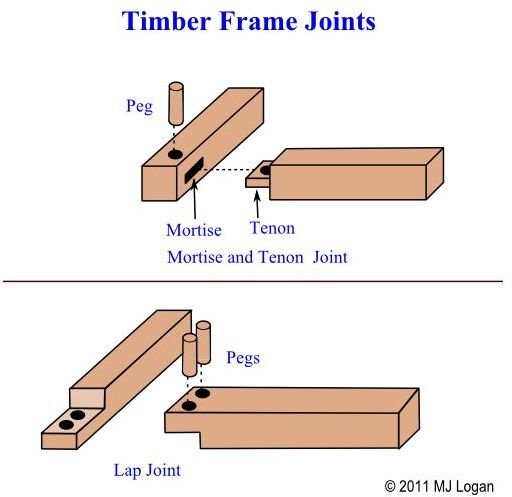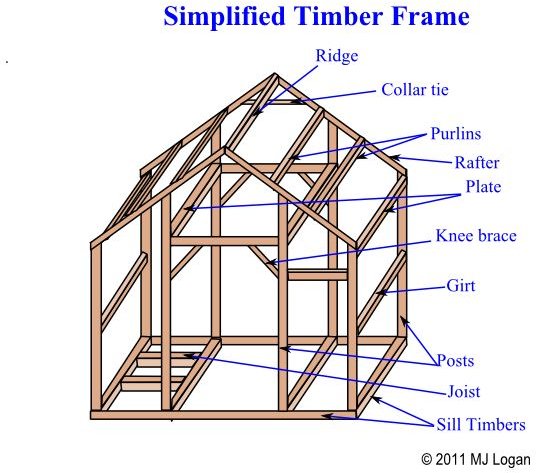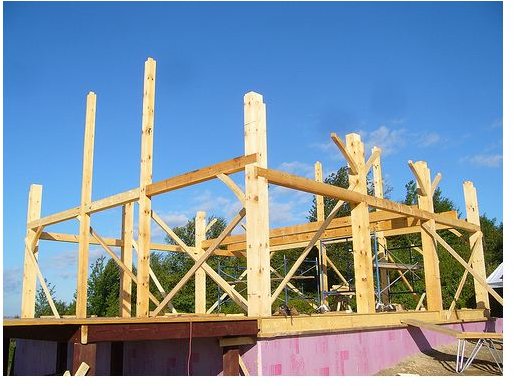DIY Timber Framing & Construction for Building Off the Grid
Timber Framing
Timber framing dates back more than 2000 years and was used by Europeans, Romans, Chinese, Japanese and Egyptians to build many different structures. Although the basic methods of joinery have changed over time, the principal remains the same–large, heavy timbers make up the structure’s frame while lighter materials enclose and complete the structure.
Until the late nineteenth century, timber framing was the most common type of construction in the United States. Then, products and methods introduced during the industrial revolution made simpler, less labor intensive structures possible.
Timber frame construction is experiencing a comeback for the aesthetics of the structure and as a sustainable way of building off the grid. There are things you should know if you’re considering a DIY timber framing project.
Method

Large timbers make up the house frame using several methods of joinery including mortise and tenon joints, lap joints and scarf joints. Instead of the glue used in furniture making or the metal fasteners used in stick framing, hardwood pegs inserted into holes bored through the joints hold them together.
In some cases, wooden wedges may be used instead of pegs. Tenons extend through the mortise and out the other other side of the post or beam. A square or rectangular hole holds the wedge which prevents the tenon from pulling out of the mortise.
Doing It Yourself

Barn raising was a community event that brought neighbors together to raise a barn. There was a good reason for this–the process is very labor intensive and required many hands and many animals to do the work.
Can you do it yourself? Of course you can–if you have basic woodworking experience and are familiar with the types of joinery involved, understand timber frame construction and how the pieces work together to form a sturdy, stable structure. If you don’t have that knowledge or skill, you can take classes that teach you how to build timber frame structures. Even with those skills and knowledge, you will still benefit from the classes and the project will go smoother and easier.
Timber frame building is not necessarily complicated, but it does require skill, time and labor.
Anatomy of a Timber Frame

A timber frame consists of major and minor frame members. Major members do most of the work and support the minor members.
The sill timbers rest on the building’s foundation and are the first major members put in place. Looking at a timber frame from the end of the structure, you see the posts, the horizontal pieces that connect them and the rafters. The entire structure is built in sections much like the end section. Each section is called a bent.
The horizontal beams that connect posts at the top along the sides are called plates, while girts connect the middle of the posts on the sides. Also horizontal are the purlins which run perpendicular to the rafters and connect them together. The rafters ends rest upon the horizontal plates at the top of the exterior walls and connect together at the ridge. The bents connect together with purlins between the rafters on the roof, with plates at the top of posts and with girts between the middle of the posts and into the sill timbers on the foundation.
Collar ties keep the rafters from spreading apart under their own weight and connect between opposite sides of the rafters. Knee braces and arched braces add support to horizontal members and help transfer loads to the vertical posts and down to the foundation.
Credits and References
Photos by Arbre Evolution at Flickr.com: Photo 1, Photo 2
Timber Frame Glossary: https://www.dreamingcreek.com/glossary.htm
A House With No Nails: Building a Timber Frame Home: https://www.popularmechanics.com/home/improvement/outdoor-buildings/4213580-2
Oak Masters: https://www.oakmasters.co.uk/home/index
